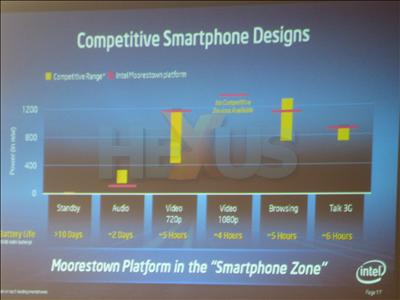Very small PCs
Intel announced its long-awaited entry into the smartphone market today with the launch of the Atom Z6xx series processor - codenamed Moorestown - which is the first Intel processor low-power enough to be used in handheld devices.
This represents a seismic shift in the smartphone market, bringing the x86 instruction set and Intel's PC heritage to an ecosystem that has, until now, exclusively used the ARM instruction set and its own operating systems and software.
We attended Intel's launch event in London, headed-up by mobile Internet device director Pankaj Kedia, who made sure he addressed the issue of Intel being in the unfamiliar territory of moving into a market already dominated by another type of chip.
The Intel spin is that the market is moving towards it, rather than the other way around, with today's high-end smartphones effectively mini PCs. While there is some validity to this perspective, Kedia admitted to HEXUS.channel that the wider acceptance of this concept is one of the main challenges Intel faces in getting the mobile phone ecosystem to buy its chips. "It's a computer that enables voice," he urged.
When talking to the ARM ecosystem - companies like Qualcomm and TI as well as ARM itself - the biggest knock they have on Intel's efforts thus far is power usage. ARM chips are designed from the ground up to be very low power, while Intel historically specialises in turbo-charged, power-hungry PC processors.
While stressing that this is just its first effort in a long-term strategy, Kedia claimed battery-life for an Atom Z6xx-based device - with a clock speed of 1.5 GHz - of around 5 hours of continuous use and ten days of standby time. "With these power reductions we're in the smartphone zone - we're in the game," said Kedia.
The slide below shows how Intel thinks its Moorestown reference device compares to the range of existing equivalent smartphones on battery life across a few usage models.










